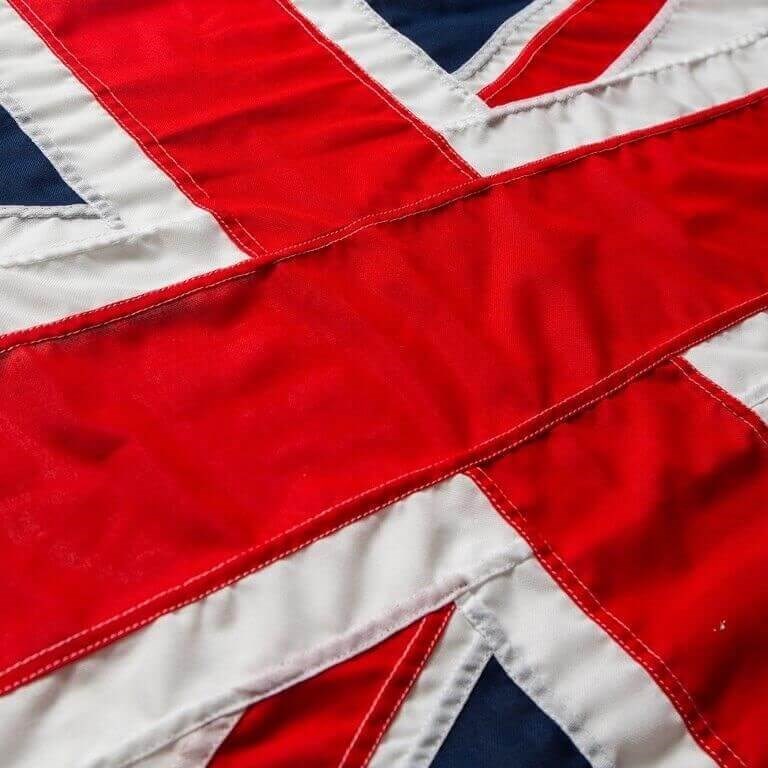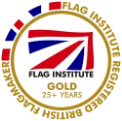Our Germany flags are produced in the traditional 2:1 ratio used for National flags in the UK so this flag will match others of the same size if you are flying several flags together. We use a MOD grade Knitted Polyester which has been tested for its durability and suitability for production of flags.
Trivia
Technical Specifications
| Adopted | 1749 |
|---|---|
| Proportion | 3:5 |
| Design | A tricolour, with three equal horizontal stripes of black, red and gold, from top to bottom |
| Colours | PMS - Red: 485 C, Gold: 7405 C CMYK - Red: 0% Cyan, 100% Magenta, 100% Yellow, 0% Black; Gold: 0% Cyan, 12% Magenta, 100% Yellow, 5% Black |
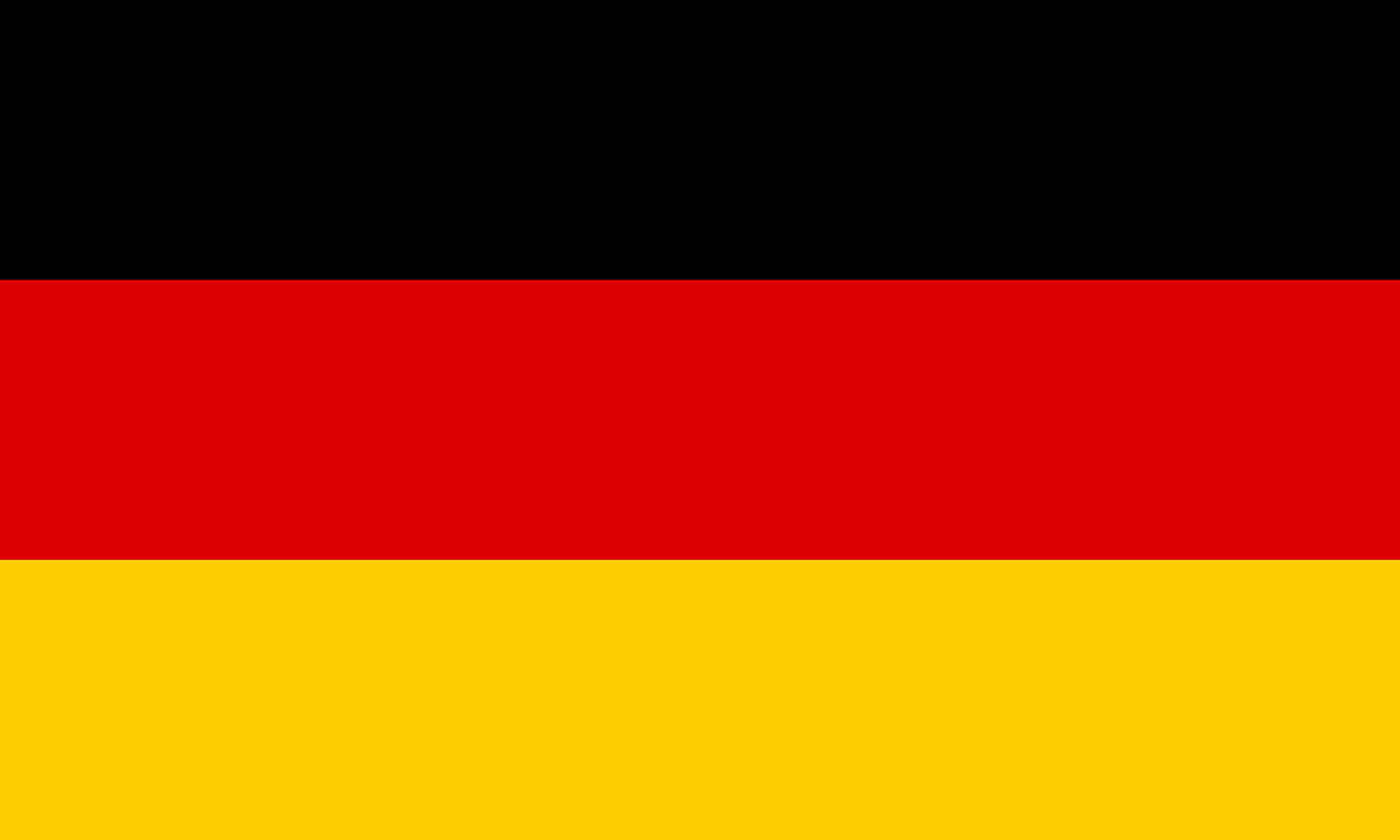
Brief History
Germany’s history is long and complex. The Holy Roman Empire, which emerged in the 9th or 10th Century, is perhaps the earliest coherent manifestation of a distinctly German nation. An imperial banner of a black eagle on a gold background was used at this point. In the 13th an 14th centuries it changed to having the eagle’s claws and beak coloured red, this was a symbol of the Holy Roman Empire’s crusades abroad. Between the 15th and 19th century a double-headed eagle was used.
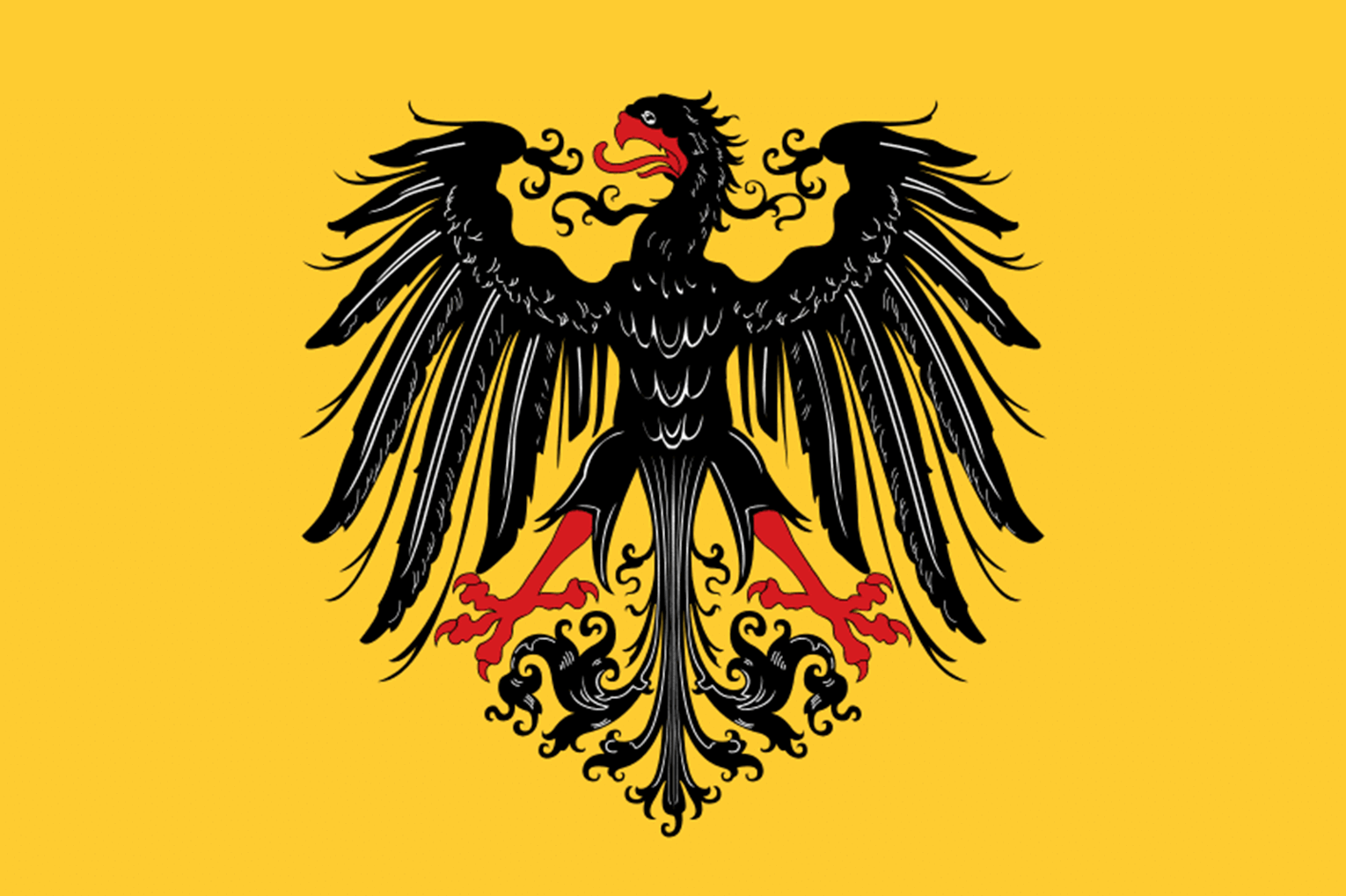
Banner of the Holy Roman Empire (14th Century)

Banner of the Holy Roman Empire (15th to 19th Century)
Weakened by the Thirty Years’ War, the Holy Roman Empire collapsed in 1806. This lead to the formation of the Confederation of the Rhine, which was made up of the 16 German states that was under Napoleonic control. At this point they did not have their own flag. Instead they used the blue-white-red Flag of France.
In 1816, Russia, Britain and their allies defeated Napoleon and created a German Confederation. It was little more than a joint attempt by the Kingdom of Prussia and the Austrian Empire to stabilise and normalise the Germanic territories, while simultaneously keeping each other at arms’ length.
After the revolutions of 1848 the Liberals took power and a national assembly was formed. The Frankfurt Parliament made the black-red-gold tricolour the official colours of Germany. The war ensign used these colours but also had the double headed eagle banner in the top left hand corner.

The Flag of the French Republic
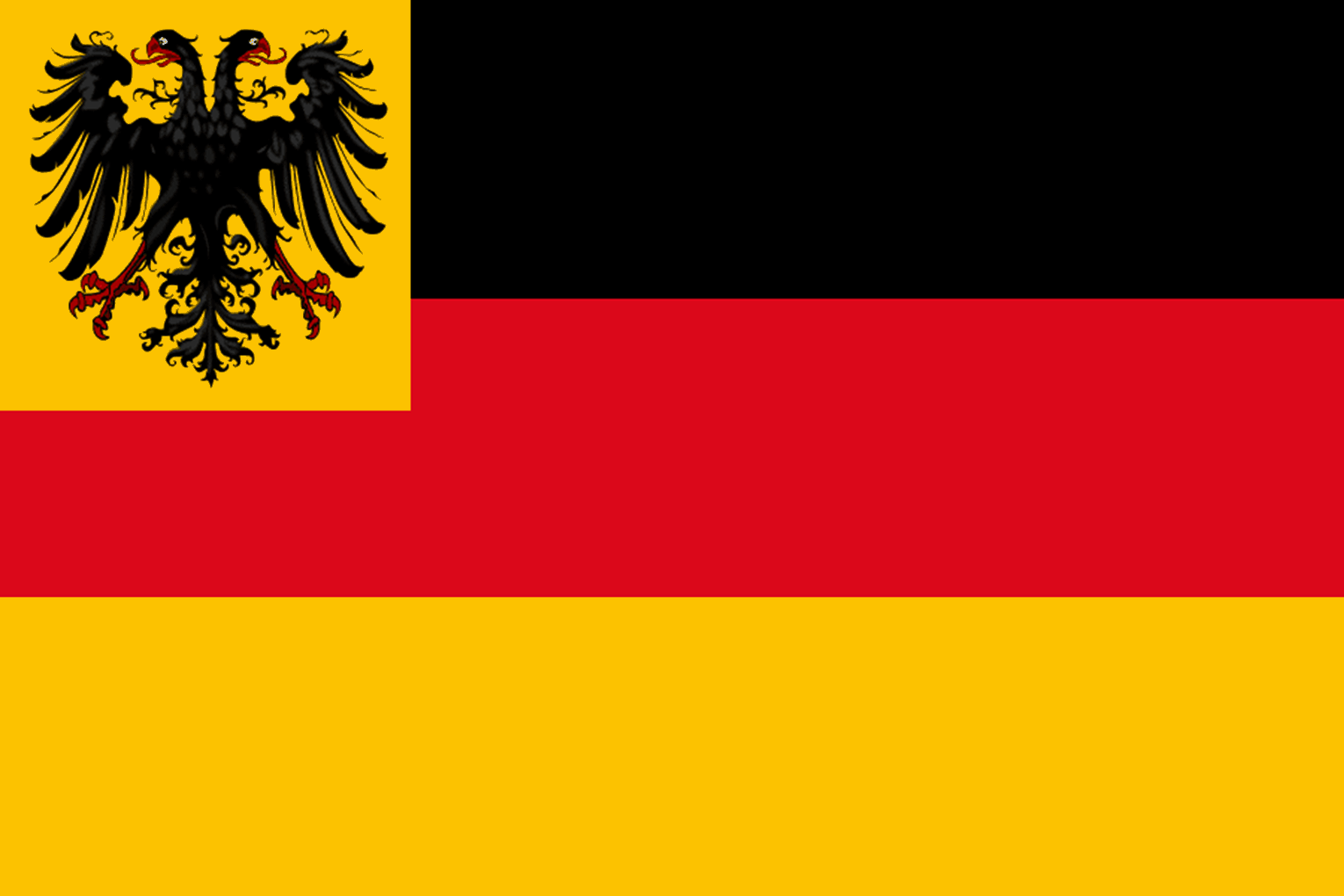
The war ensign of the Reichsflotte (1848 – 1852)
Prussia, under Otto von Bismarck, took advantage of the arrangement to exert significant influence over the Confederation, to the point of political unification of the northern German states with Prussia. What was at this time the Northern German Confederation became the German Empire in 1871, under the rule of Wilhelm I, the King of Prussia. The black-white-red tricolour was adopted as the flag of Germany and remained until the end of the German Empire in 1918.
Following Germany’s defeat in 1918, Kaiser Wilhelm II’s abdication created a power vacuum. The Social Democratic Party took control and created the Weimar Republic. The old black-red-gold tricolour was restored, however many Germans saw this as an insult following their defeat in World War One.

The Flag of the German Empire
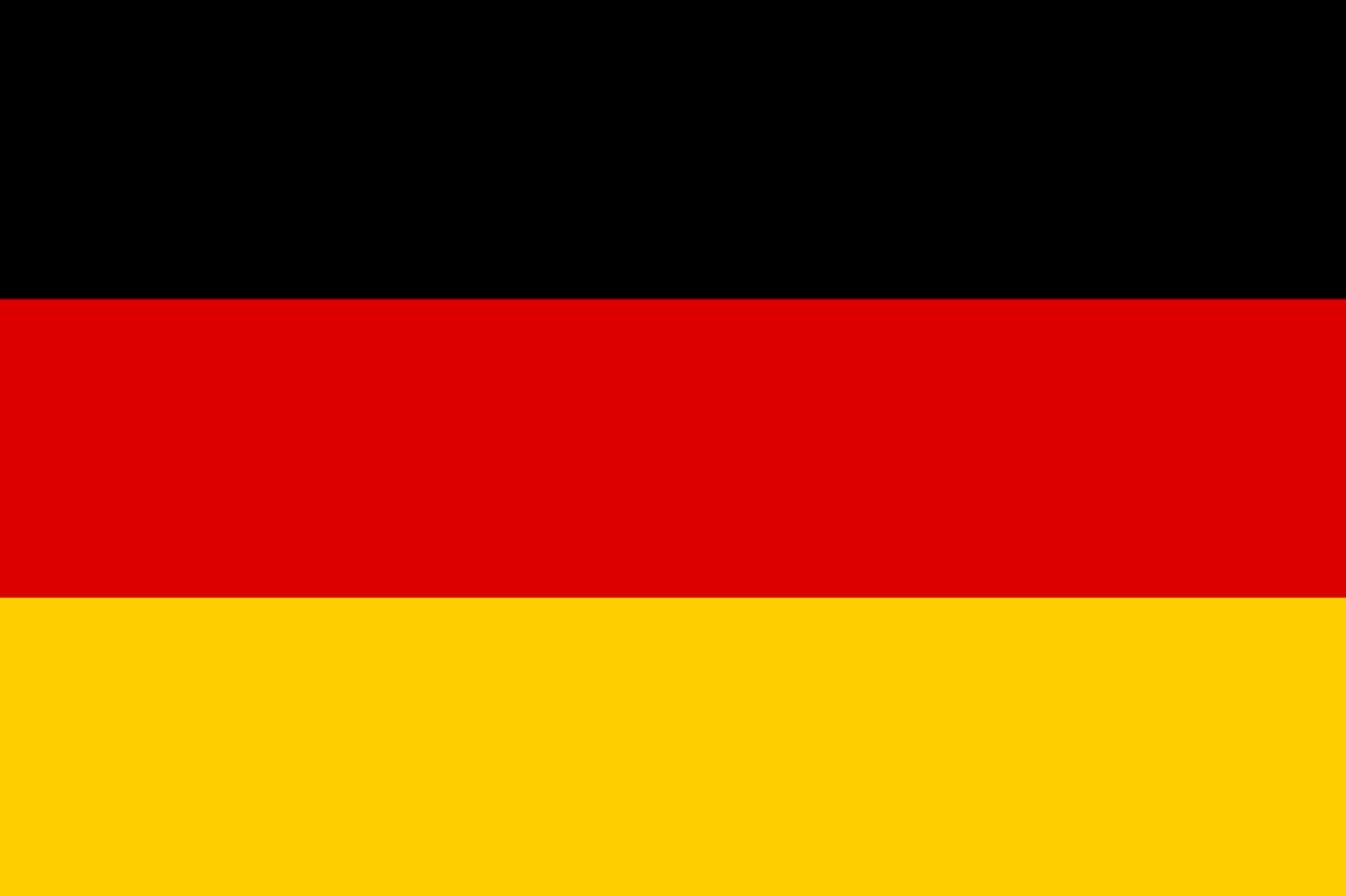
The Flag of the Weimar Republic
When the Nazi regime took power on the 30th 1933 the tricolor was discarded. On March 20th the black-white-red tricolour was re-introduced along with the swastika flag of the Nazi Party as Germany’s National Flags.
Germany’s loss in World War Two saw the end of the National Socialist Party. Germany was divided into five zones of occupation.
At this time, Germany as an independent nation did not exist, but a national flag was needed for ships sailing international waters. A C-Pennant was commissioned as the German civil and naval ensign.
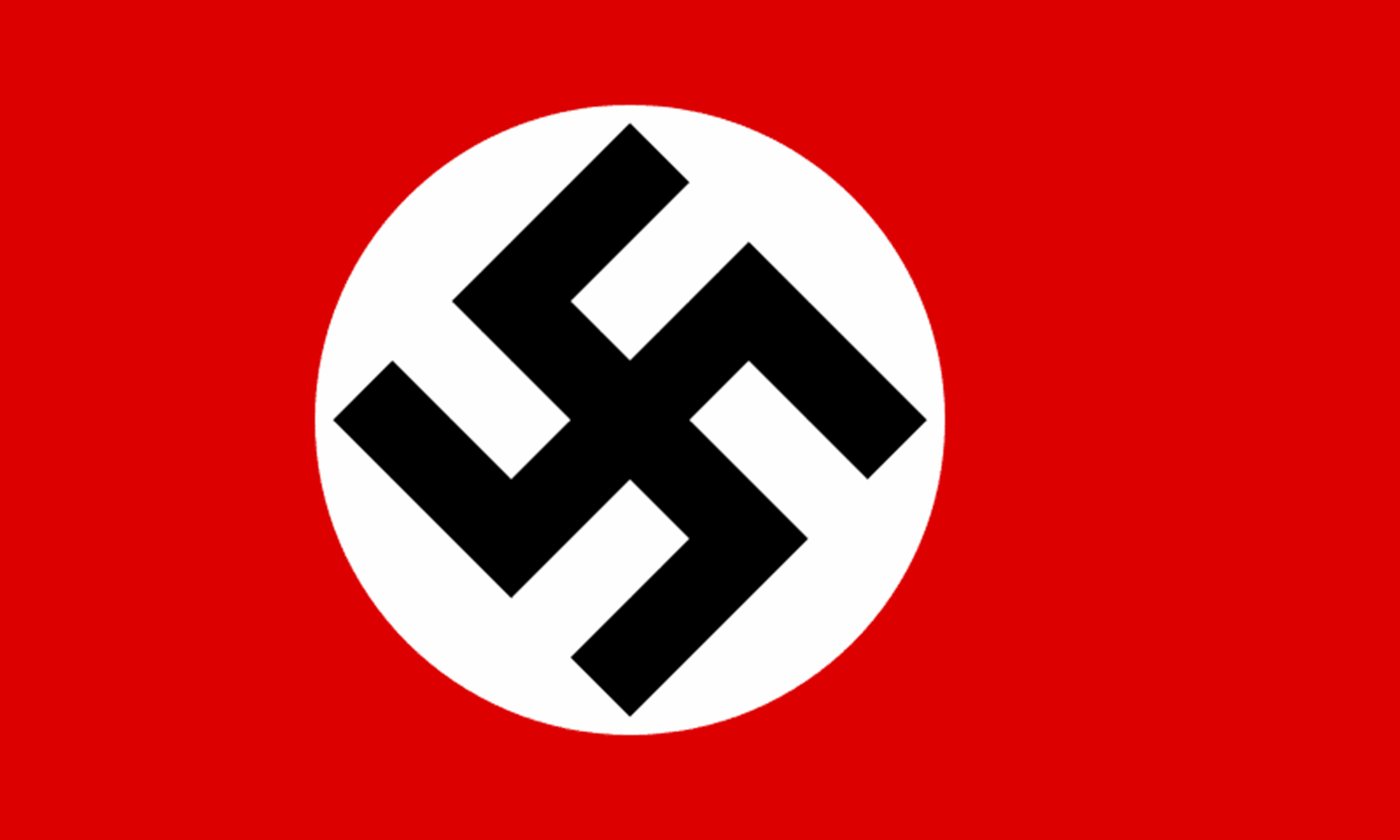
The Flag of Nazi Germany

The German C-Pennant
By 1948 It was decided that the best way to prevent all of Germany from falling into Soviet control was to reinstate the country’s nationhood, and the following year the Federal Republic of Germany came into being.
The black-red-gold tricolour became the Flag of the Republic of Germany. The Soviet Union developed its eastern division as the German Democratic Republic, using the black-red-gold tricolour with the National Emblem of the German Democratic Republic in the centre. The hammer represents the workers, the compass being the intelligentsia and the ring of rye represents the farmers.
After the collapse of Soviet empire in the 1990s the black-red-gold tricolour became the Flag of the Federal Republic of Germany.
A post-war guilt prevailed in Germany for decades; a fear that nationalism was a cause for the rise of National Socialism paralyzed patriotic feeling. The display of German flags was rare.
It wasn’t until the 21st Century, beginning with the 2002 World Cup, that Germany found its own post-post-war brand of patriotism; and only when that had happened, did the flags begin to wave again.
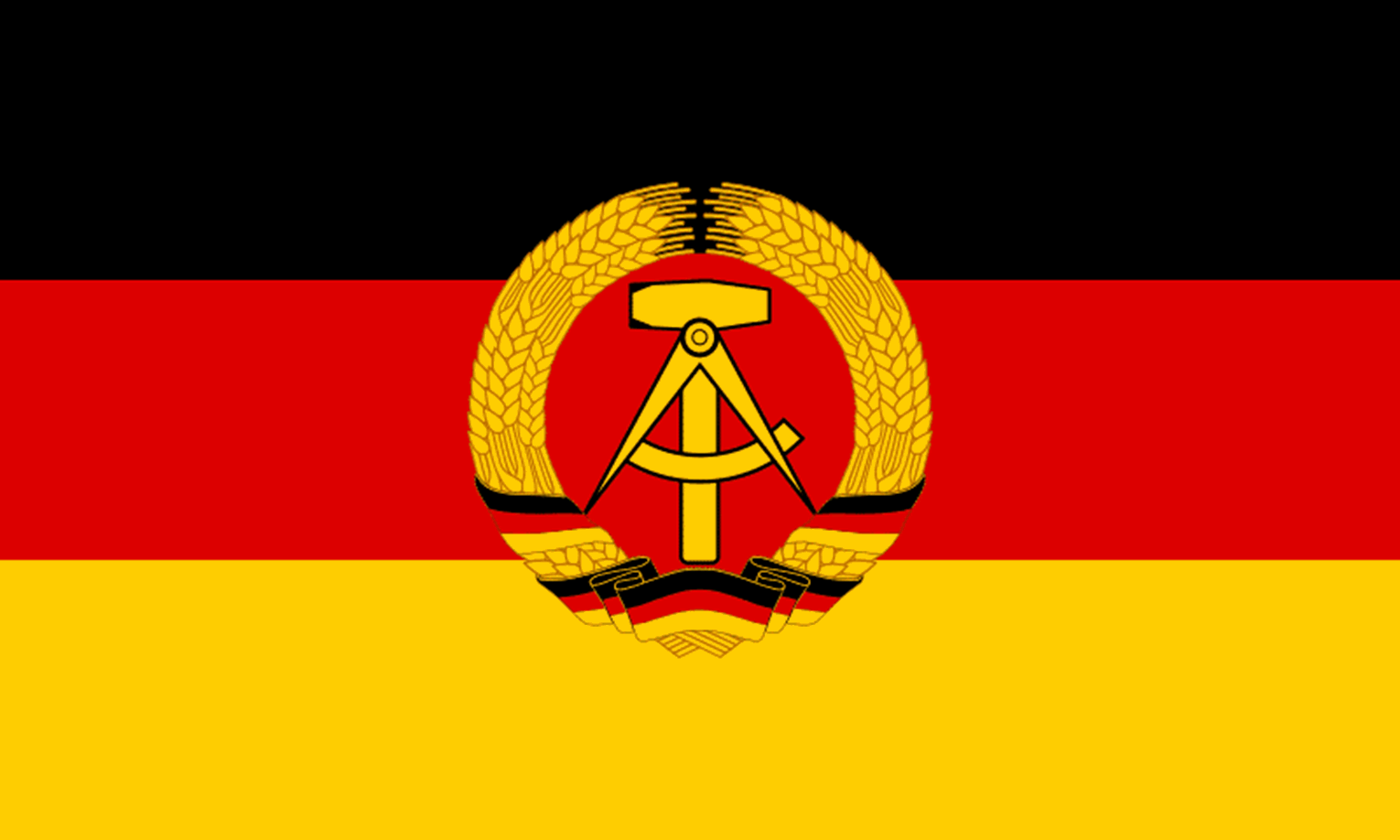
The Flag of German Democratic Republic (1959 – 1990)
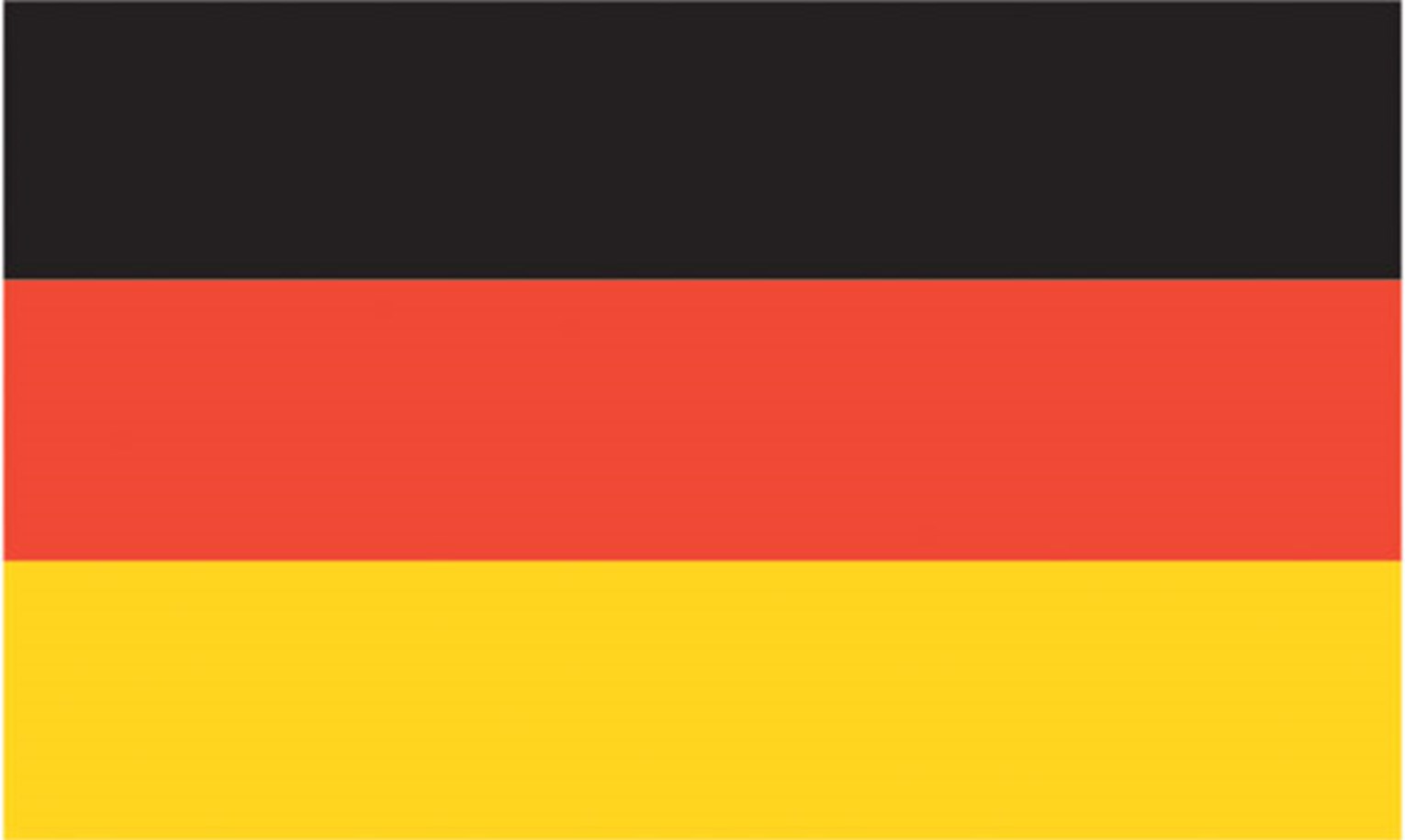
The Flag of the Federal Republic of Germany (1949 – Present day) and The Flag of German Democratic Republic (1949 – 1959)
Other Flags of Germany
The German National Flag is also its civil ensign. There is a state Flag, bearing the device of an eagle, dating back to the days of the Holy Roman Empire. The Navel Ensign is the same, apart from it’s square swallowtail.
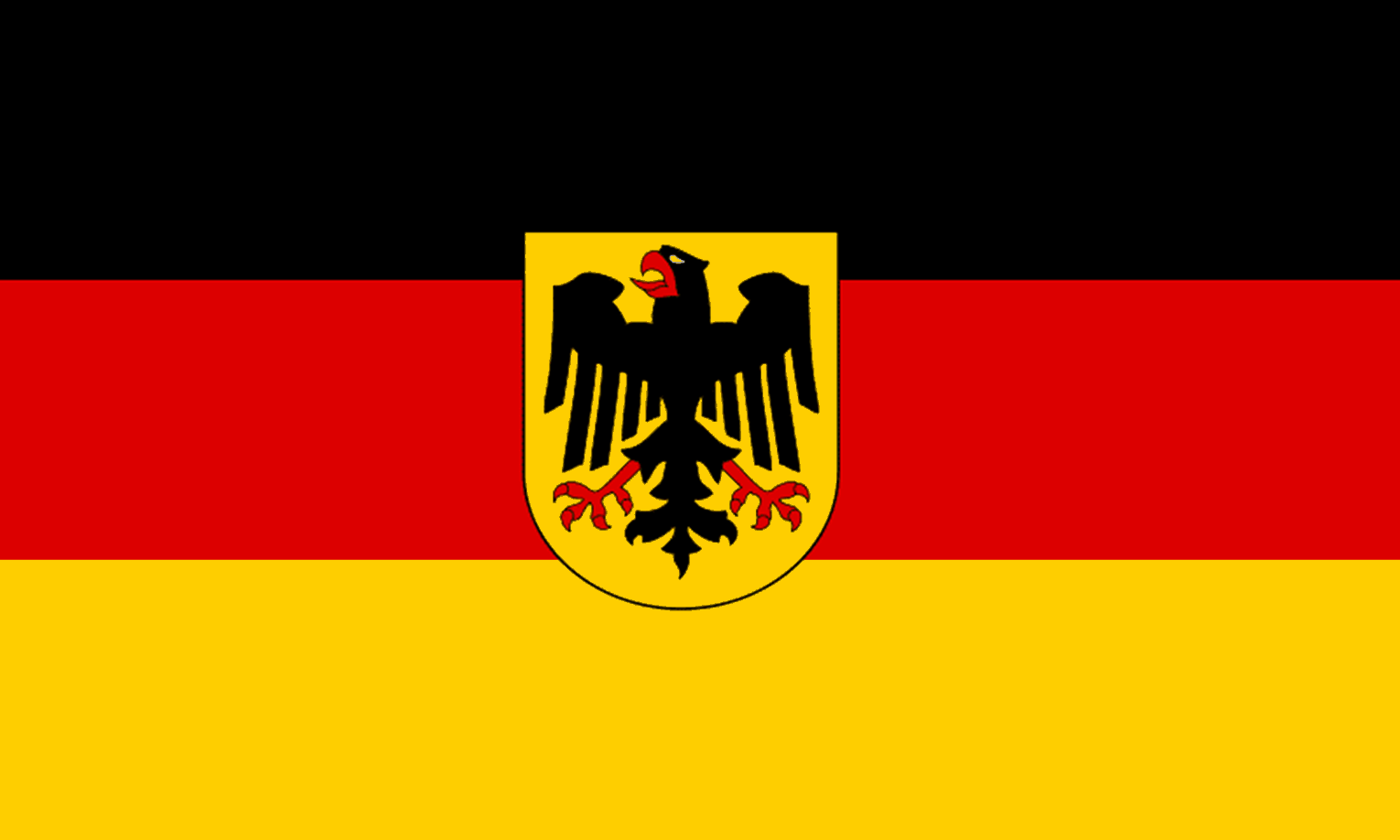
The State Flag of Germany
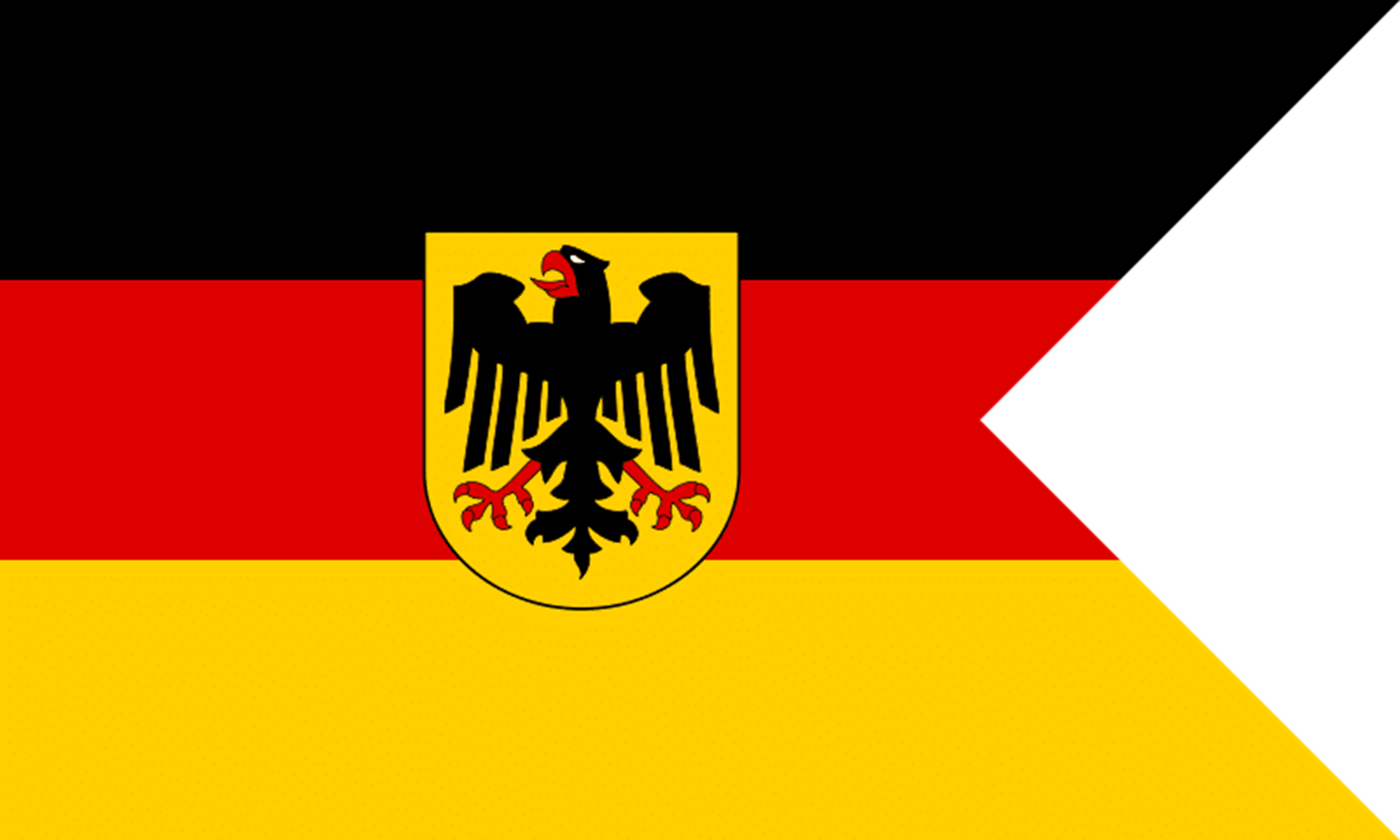
The Navel Ensign of Germany
Useful Links
Download Our Brochure
Download our electronic brochure to check out the full range of products we can supply you with.
Download NowContact Us
See a flag you like? We can manufacture any flag design in any size, speak to one of our experts to find out more.
Contact Us


